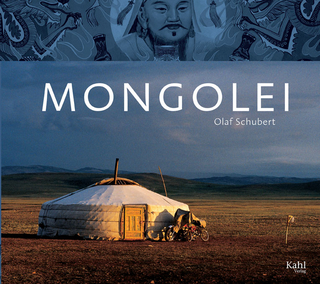
Chomolungma Sings the Blues
Travels Round Everest
Seiten
2001
Robinson Publishing (Verlag)
978-1-84119-400-4 (ISBN)
Robinson Publishing (Verlag)
978-1-84119-400-4 (ISBN)
Sheds a new and important light on the mountain
and its people
If there is one mountain that is known across the whole world, it must be the highest - Everest. To the people who live at its feet she is Chomolungma, Goddess Mother of the World. The disappearance of George Mallory and Andrew Irvine close to the summit in 1924 lent the mountain a tragic romanticism, of young men risking everything for a dream. When Norgay Tenzing and Ed Hillary became the first men to stand on the summit in 1953, it was the crowning glory for the coronation of Elizabeth II.
But nearly fifty years on, there are scores of ascents nearly every season. There are stories of bodies and heaps of garbage abandoned on the slopes, of the loss of cultural identity among the Sherpas and Tibetans who live at the foot of Everest. Ed Douglas spent parts of 1995 and 1996 travelling in Nepal and Tibet, talking to politicians and environmentalists, to mountaineers and local people. He found a poor region struggling to develop, and encountering environmental problems far greater than rubbish left by climbers. Local people are resourceful and cultured, reliant on the work the mountaineers and the mountain provide, but striving to find a balance between the new and the old.
and its people
If there is one mountain that is known across the whole world, it must be the highest - Everest. To the people who live at its feet she is Chomolungma, Goddess Mother of the World. The disappearance of George Mallory and Andrew Irvine close to the summit in 1924 lent the mountain a tragic romanticism, of young men risking everything for a dream. When Norgay Tenzing and Ed Hillary became the first men to stand on the summit in 1953, it was the crowning glory for the coronation of Elizabeth II.
But nearly fifty years on, there are scores of ascents nearly every season. There are stories of bodies and heaps of garbage abandoned on the slopes, of the loss of cultural identity among the Sherpas and Tibetans who live at the foot of Everest. Ed Douglas spent parts of 1995 and 1996 travelling in Nepal and Tibet, talking to politicians and environmentalists, to mountaineers and local people. He found a poor region struggling to develop, and encountering environmental problems far greater than rubbish left by climbers. Local people are resourceful and cultured, reliant on the work the mountaineers and the mountain provide, but striving to find a balance between the new and the old.
Ed Douglas is a writer and journalist with a passion for the wilder corners of the natural world. A former editor of the Alpine Journal, Ed is an enthusiastic amateur climber and mountain traveller with a particular interest in the Himalayas. His books include Tenzing: Hero of Everest, the first full-length biography of the first man, with Sir Edmund Hillary, to climb Everest.
| Erscheint lt. Verlag | 27.9.2001 |
|---|---|
| Verlagsort | London |
| Sprache | englisch |
| Maße | 127 x 203 mm |
| Gewicht | 268 g |
| Themenwelt | Reisen ► Bildbände ► Asien |
| Reisen ► Reiseberichte ► Asien | |
| ISBN-10 | 1-84119-400-X / 184119400X |
| ISBN-13 | 978-1-84119-400-4 / 9781841194004 |
| Zustand | Neuware |
| Haben Sie eine Frage zum Produkt? |
Mehr entdecken
aus dem Bereich
aus dem Bereich
Forschungsexpeditionen zu den spektakulärsten Orten der Erde
Buch | Hardcover (2023)
Prestel (Verlag)
49,00 €


